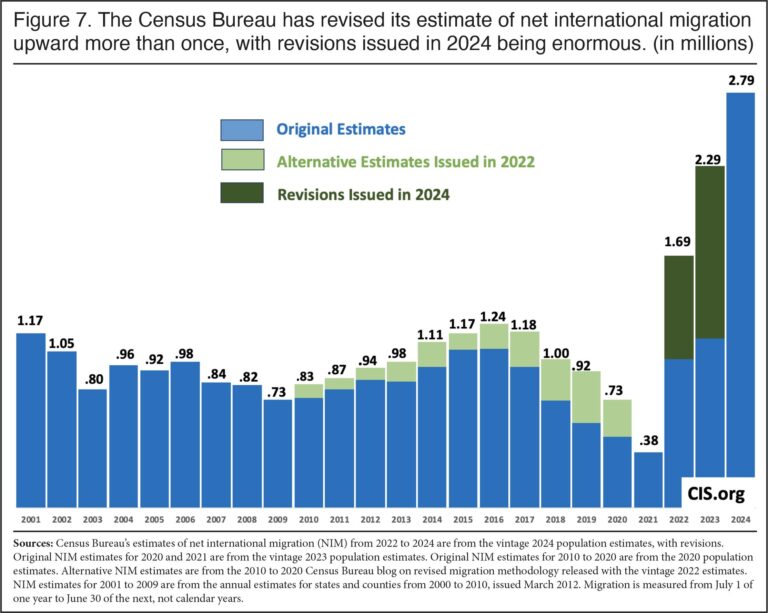Immigration continues to be a defining and often contentious issue in the United States, shaping the nation’s social, economic, and political landscape. Recent findings from the Pew Research Center offer a data-driven perspective on the characteristics, trends, and contributions of immigrants living in the U.S. This article delves into the latest statistics and analyses, shedding light on who immigrants are, where they come from, and the role they play in American society, providing a clearer understanding amidst ongoing debates.
Demographic Trends Shaping the Immigrant Population in the United States
The immigrant population in the United States continues to evolve, influenced by a complex interplay of age, origin, and socioeconomic factors. Recent data highlights a notable shift with younger immigrants constituting a growing segment, contributing fresh dynamism to the workforce and cultural landscape. Meanwhile, the origins of U.S. immigrants have diversified significantly, moving beyond traditional sources to include a broader range of countries from Asia, Africa, and Latin America. This demographic transformation reflects changing global migration patterns, economic opportunities, and U.S. immigration policies.
Several key trends stand out:
- Age Distribution: Immigrants under 30 years old now make up a larger share compared to previous decades, signaling changes in family formation and labor market participation.
- Geographic Diversity: Countries like India, China, and Nigeria increasingly contribute to the immigrant mix, strengthening America’s multicultural fabric.
- Education Levels: There is a growing proportion of highly educated immigrants, particularly in STEM fields, fueling innovation and economic growth.
- Settlement Patterns: While traditional gateway cities still attract newcomers, emerging metro areas and rural communities are seeing a renewed influx of immigrants.
| Category | 2000 | 2020 |
|---|---|---|
| Immigrants under 30 | 28% | 36% |
| From Asia | 25% | 34% |
| With bachelor’s degrees | 21% | 31% |
| Living outside gateway cities | 15% | 27% |
Economic Contributions and Challenges Faced by Immigrants
Immigrants play a vital role in bolstering the U.S. economy, contributing significantly as entrepreneurs, workers, and consumers. Data from Pew Research Center shows that foreign-born workers make up nearly 17% of the labor force, filling crucial roles in industries like agriculture, technology, and healthcare. Their entrepreneurial spirit is evident, with immigrants founding an estimated 28% of all new businesses annually, generating jobs and stimulating local economies, particularly in metropolitan hubs.
However, the financial gains come intertwined with notable obstacles that hinder many immigrants’ economic stability. Common challenges include:
- Employment barriers: Credential recognition issues and language proficiency limit access to higher-paying jobs.
- Legal and social hurdles: Undocumented status often restricts access to formal credit and social safety nets.
- Wage disparities: Immigrant workers frequently earn less than their native-born counterparts in comparable roles.
| Economic Indicator | Immigrant Workers | Native-born Workers |
|---|---|---|
| Labor Force Participation | 65.4% | 61.5% |
| Median Hourly Wage | $15.80 | $19.40 |
| Entrepreneurship Rate | 28% | 12% |
Public Opinion and Policy Implications for Immigration Reform
Public sentiment toward immigration remains deeply divided but shows notable trends that influence legislative priorities. Recent surveys reveal that a majority of Americans support a pathway to citizenship for undocumented immigrants, reflecting a growing acknowledgment of immigrants’ contributions to society. Yet, concerns persist regarding border security and economic competition, indicating a nuanced public stance that shapes the policymaking landscape. These complexities challenge lawmakers to craft balanced solutions that address both humanitarian and economic considerations.
Policymakers are increasingly responding to these mixed perceptions by emphasizing comprehensive reform strategies, which include:
- Enhanced border control measures to address illegal crossings
- Expanded legal immigration pathways targeting skilled workers and family reunification
- Provisions for DREAMers and those brought to the U.S. as children
- Integration support programs to aid in education, employment, and civic engagement
The challenge remains to align these policy elements with the evolving public opinion to ensure both political feasibility and human dignity.
| Policy Priority | Public Support (%) | Legislative Focus |
|---|---|---|
| Pathway to Citizenship | 68% | High |
| Stronger Border Enforcement | 54% | Moderate |
| Support for DREAMers | 72% | High |
| Limiting Legal Immigration | 35% | Low |
Recommendations for Enhancing Integration and Support Services
Boosting immigrant integration requires a multifaceted approach centered on accessible resources and community engagement. Policymakers and local agencies should prioritize language acquisition programs that are flexible and culturally sensitive, ensuring learning environments that reflect migrants’ diverse backgrounds. Additionally, expanding job training initiatives tailored to immigrants’ skills and certifications can significantly enhance employment prospects and economic self-sufficiency. Collaboration with nonprofit organizations and employers to offer mentorship and networking opportunities has also proven effective in smoothing the transition into the U.S. workforce.
Support services must also address social and legal needs to foster stability and inclusion. Essential recommendations include:
- Comprehensive legal assistance focused on immigration status clarification and rights education, delivered through community hubs.
- Accessible healthcare navigation services that guide immigrants through medical systems and insurance enrollment.
- Family integration efforts such as after-school programs for children and culturally aware counseling services.
| Service Area | Current Coverage | Recommended Improvement |
|---|---|---|
| Language Training | 75% access | Expand evening/weekend classes |
| Job Placement | 60% placement rate | Increase employer partnerships |
| Legal Support | Limited availability | Establish mobile legal clinics |
Concluding Remarks
As the debate over immigration continues to shape policies and public opinion in the United States, the data from the Pew Research Center offers a critical, fact-based perspective. By grounding discussions in reliable statistics, policymakers and citizens alike can move beyond rhetoric and work toward informed decisions that reflect the realities faced by immigrants and the nation as a whole. Understanding the nuances behind the numbers is essential for fostering a more inclusive and effective approach to immigration in the years ahead.




